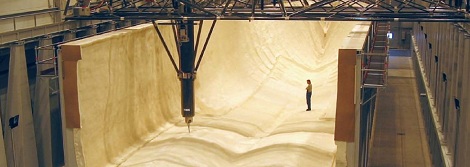Before you zip to the comments to scream “not a hack,” watch a few minutes of this teardown video. This 48 minute detailed walkthrough of a one-off art piece shows every aspect of the project: every requirement, design decision, implementation challenge, and mistake. Some notable details:
- PCBs that are 1 meter wide (all one piece!)
- 350,000 white LEDs
- Carbon fiber enclosures
- 1-wire serial bus (like the WS2812 only not quite) with 12 bit resolution (TLC5973)
- Customized cable test jigs, PCB test jigs, and test modes
- An exploration on ESD issues in production
It’s not often that one sees teardowns of professional projects like this, and there’s quite a bit to learn from in here, besides it being a beautiful piece of art. See more about the Caviar House “Emergence” project at the Heathrow Airport, along with stunning pictures and video of the display in action.
If you’re thinking about how you’d control 350,000 individual LEDs with 12 bit grayscale and have it look smooth, check out the processor requirements behind the megascroller, which only handles 98,000 LEDs. More recently, we asked how many LEDs are too many, and the answer was quite a bit lower than 350k.
Continue reading “Amazing Analysis Of A 350,000 LED Airport Art Project”













